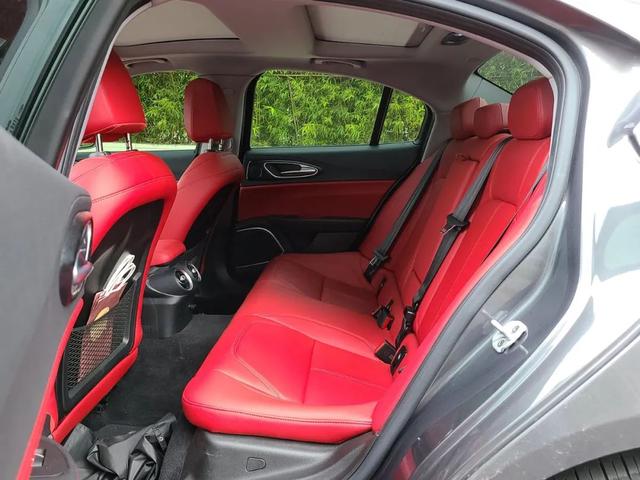七年级下册重点短语和句型(初一下册重点短语)

Unit 5
Topic1
重点短语
1.on foot go …on foot = walk ( to )…
2.at the school gate在学校大门口
3.on weekdays 在平日 ,在工作日
4.on weekends=on the weekend在周末
5.after school 放学后
6.after class 下课后
7.after breakfast / lunch / supper
早餐 / 午餐 / 晚餐后
8.in ones free time在某人空闲时间
9.have a rest 休息一下
一周名词:

重点句型
1.What are you doing?
---- He is cleaning the dormitory.
2. Are you doing your homework?
Yes, I am./No, I am not.
3. How long can I keep them? Two weeks.
4. Thank you. ---It’s a pleasure. = A pleasure = My pleasure. 别客气。
5. Sorry, I don’t have any. Thank you all the same. 仍然感谢你。
重点详解
1. ① go to bed“上床”“就寝”I often go to bed at ten.
② go to sleep“入睡”“睡着”Last night I went to sleep at two o’clock.
2.some, a few 与a little
“一些,有些”三者都修饰名词。
some既可以修饰可数名词又可以修饰不可数名词。
We want some apples and some water.
a few用在可数名词复数之前
a little用在不可数名词之前。
There are a few books and a little waterin the classroom.
3. 与how相关的短语
how often多常 how many多少
how much多少钱 how old多大
4. And you must return them on time.
你必须按时归还它们。
Return意为“归还,回归”
① return sth. to sb.把某物归还某人
=give back sth. to sb.
② return to“回到…”,相当于come back to…
5.talk“交谈”,常用的短语talk to/with sb.
Maria and a girl are talking at the lost and found.
6.巧辩异同talk, say, speak与tell
(1) talk“交谈”,表示通过谈话方式交换意见、消息等。
(2) speak“说话”,强调开口发声,后常接某种语言。
(3) say “说”,强调所说的话的内容。
(4) tell“告诉”,有时兼含“嘱咐”“命令”等。tell a truth说真话,tell a lie说谎,
tell a story 讲故事等固定搭配。
7.look for“寻找”,强调寻找的过程;
find“找到” 发现,强调找的结果。
I can’t find my purse and I am looking for it.
8. Read, see ,look and watch
look(at) 看,表动作,不及物动词,后面需加介词at才能跟宾语,指看的动作,
see 看见,指看的结果,
read常指看书、看报纸等,表示阅读
watch看比赛、电视
9.Here are some photos of his.这有他的一些照片。
photos of his是双重所有格。his是名词性物主代词,后还可以接名词所有格。
a friend of mine我的一个朋友
a classmate of my brother’s我弟弟的一个同学
10,also与too
also放在句中,too用于句末。
also意为“也”,常用于be动词和情态动词后面,实义动词的前面。
e.g Helen is also a student.
I have long hair and she has long hair, too。
11. borrow:指主语借入
borrow sth. from sb.
e.g You can borrow this book from the library.
May I borrow your eraser?
lend: 指主语借出 lend sth. to sb. / lend sb. sth.
e.g Can you lend your car to me? They often lend us their ball.
keep 和 borrow, lend 的意思一样,都是表示借的意思, 区别是borrow和lend是瞬间动词/,短暂性动词,不能跟一段时间连用,而keep是延续性动词,表示借一段时间,后常跟一段时间
e.g You may keep this book for two weeks.
borrow借进 lend借出 keep借多久
14. on time: 准时,强调不早不迟到达
e.g We must go to work on time.
in time: 及时,强调在规定的时间以前到达
The students can get there in time.
15. Japanese: adj 日本的,日本人的,日语的 n.日本人,日语
当Japanese表示日本人时,是可数名词,单复数同形(与Chinese用法相同)
e.g Two Japanese and three Chinese are swimming in the swimming pool.
重要句型总结
1.What’s in sth 表示哪里有什么东西
e.g What’s in your purse? 钱包里有什么东西?
2. What else 还有别的什么么? else: 别的,其它的 What else do you have?
Who else还有别的什么人么?
Where else 还有别的什么地方么?
else除了可以放在疑问词what,who, where等后面,还可以放在不定代词something, anything, nothing, somebody, anybody, nobody后面
e.g I don’t have anything else to do. I can’t see anybody else in the room.
3. Here are some photos of his.
名词+Of 名词性物主代词/名词所有格----双重所有格
e.g a friend of Sam’s 萨姆的一个朋友
a friend of mine 我的一个朋友
4. love doing sth习惯性的爱好和习惯
love to do sth一次性的动作或目前想做的事
e.g She loves reading in bed.
I love to go swimming today.
“Like 动词ing”表示“喜欢做某事”
I like playing basketball.
Tom likes listening to music.
“Like to 动词”也表示“喜欢做某事”,只是“Like 动词ing”表示习惯性动作(也可以说是爱好), 而“Like to 动词”表示一次性或短暂性的。
Our PE teacher likes swimming.( 表示爱好)
He likes playing basketball,but today he doesn't like to play basketball.
他爱好打篮球(爱好),但是今天他没去打篮球(短暂性的)。
现在进行时语法讲解
1.现在进行时表示:
(1) 现在进行时表示正在发生或进行的动作,可与now=at the moment现在, look看,listen听等时间状语连用 e.g I’m reading a book now.
(2) 现在进行时表示当前一段时间内一直进行的动作
e.g They’re working on a farm this week.
(3) 某些行为动词的现在进行时形式可以表示将来,常常有意图,安排或打算的含义,并且可与表将来的时间状语连用,到目前我们所学的这类动词有come, go, fly, return
e.g They are flying to London this afternoon.
We are going to Hong Kong tomorrow.
Steve is coming tomorrow evening.
2.常用的时间状语:now, at the moment, look, listen等。
3.谓语动词构成:be(am/is/are) v.-ing形式。
4.动词的-ing形式构成:
一般在动词末尾加-ing
buy---buying call----calling drink----drinking
以不发音字母e结尾的单词,去e加-ing
come---coming drive---driving give-----giving
末尾只有一个辅音字母,且这个辅音字母前面不是字母组合的词,要双写末尾辅音字母,再加-ing
plan----planning swim----swimming
stop---stopping sit---sitting
以ie结尾的词,变ie为y,再加-ing
die----dying lie----lying
5.现在进行时态的肯定、否定和疑问式。
(1)肯定句:主语 be doing sth
I am running. He/She is running.
(2)否定句:主语 be not doing sth
I’m not running. He/She isn’t running.
(3)一般疑问句:Be 主语 doing sth
回答:Yes,主(代) be /No,主(代) be not
Are you running? —Yes, I am./—No, I am not.
Is he/she running? —Yes, he/she is./ —No. he/she isn’t
(4)特殊疑问句: What be 主语 doing?
Topic3
重点短语:
1. outdoor activity 课外活动
2. easy and interesting 容易又有趣
3. difficult and boring 又难又乏味
4. be friendly to sb. =be kind to sb.对某人友好
5. between…and… 在……之间…
6. learn(…)from… 向…学习…/从…中学…
7.learning about the past了解过去
8.learn about了解
9.learn by oneself自学
10. from…to… 从……到……
11. in the morning / afternoon / evening
在早上/ 下午/ 晚上
12. on Monday 在星期一
13. on Monday morning在星期一的早上
14. tell sb. about sth告诉某人关于某事
重点句型
1.What day is it today?---It’s Sunday.
(在英语国家每周的第一天是星期天而不是星期一)
2.What class are they having?
They are having a music class.
3. What time does the class begin? At ten o’clock.
4. What do you think of math? = How do you like math ? 你认为数学怎么样?
----It’s difficult and boring.
5. Why (为什么)do you like English ?
Because(因为)it’s easy and interesting.
6. Can you tell me something about it?
7. What subject (学科)do you like best ? I like history best.
8. At school, my teachers and classmates are very friendly to me.
9. I study Chinese, English, politics, geography and some other subjects.
(other泛指其他的,别的 名词复数 another 泛指又一个、再一个、另一个 名词单数 the other 两者中的另一个)
10. English is my favorite subject.
11. I also like P.E and music.
= I like P.E and music , too. (也)
重点详解
1.询问星期几用What day…?
回答:It’s Wednesday/Sunday…。
与what有关的短语:what class什么班
what color什么颜色 what time几点
What’s the date…? 是对日期(几号)的提问。
What day is it today? —It’s Monday.问星期
What’s the date today?—It’s the May 1st.问具体日期。
What do you do?—I’m a teacher.
What does he look like?—He is tall/He has a small mouth.问外貌
What’s she like?—She is kind/friendly..问性格。
2. How many 可数名词的复数形式;
How much 不可数名词。
How many lessons does he have every weekday?
3. in 时间段(in the morning/afternoon/evening
季节/月份/年份前也用in:in Spring/Oct/in September,2008)
in用于泛指一天的上午,下午,晚上等,也用于某个较长的时间,如年,月,季节等,还可以表示“从现在起一段时间以后”in a week
at 时间点[钟点时(刻)](at 6 o’clock)
at noon at night at midnight at this time of day
on 具体时间(具体日期、节日前on Sep 10th/Women’s Day/rainy Day)
在星期几常用on,在具体点钟前用at.
4. What do you think of …?
= How do you like…?
你认为……怎么样?
What one’s favorite…? = What does sb. like best?
某人最喜欢什么?
Which subject do you like best?你最喜欢什么科目?
5. Why do you like it? 你为什么喜欢它?
--Because it’s easy and interesting.因为它简单而有趣。
用why提问必须用because回答。
Why? ----Because it’s interesting.
如果表示你为什么不用 Why not…? 或Why don’t you…?
6.be friendly to sb. 对某人友好
My teachers are very friendly to me.
注: friendly是形容词 “友好的”“友善的”,而不是副词。
7. a lot = much“许多”,后接宾语时要说a lot of 也可以表示“非常,十分”。
I can learn a lot from it.我能从中学到很多东西。
8. You must like English very much.
你一定非常喜欢英语。
must在这里表示肯定推测。
9. It’s time for (doing) sth= it’s time to do sth. 该做某事了
It’s time for class.上课的时间到了.
10.can 动词原形,它不随主语和数而变化。
(1)含有can的肯定句:主语 can 谓语动词的原形 其他。
(2)变一般疑问句时,把can提前:Can 主语 动词原形 其他?
肯定回答:Yes,主语 can。否定回答:No,主语 can't.
(3)含有can的否定句:主语 can't 动词的原形 其他。
(4)含有can的特殊疑问句:特殊疑问词 can 主语 动词原形 其他?
11.may 动词的原形。(may为情态动词)一般疑问句是把may提前,肯定回答是:Yes,主语 may。否定回答是:No,主语 mustn't。或please don't。
12. have to 后加动词原形,侧重客观的需要,有“不得不,被迫”之意,有多种时态形式,
否定式为don’t have to(needn’t)意为“不必”。
Must 侧重于说话者的主观看法,认为有必要或有义务做某事,只有现在时一种形式,
否定式must’t意为“一定不要,不允许,禁止”反意词为“needn’t”。
,免责声明:本文仅代表文章作者的个人观点,与本站无关。其原创性、真实性以及文中陈述文字和内容未经本站证实,对本文以及其中全部或者部分内容文字的真实性、完整性和原创性本站不作任何保证或承诺,请读者仅作参考,并自行核实相关内容。文章投诉邮箱:anhduc.ph@yahoo.com






